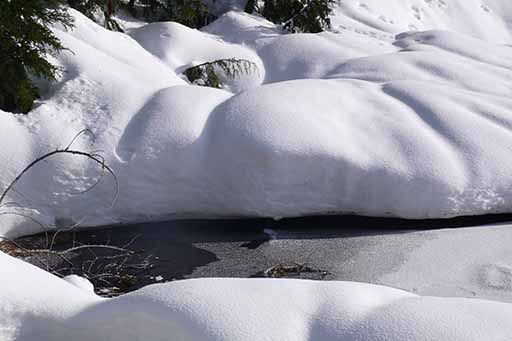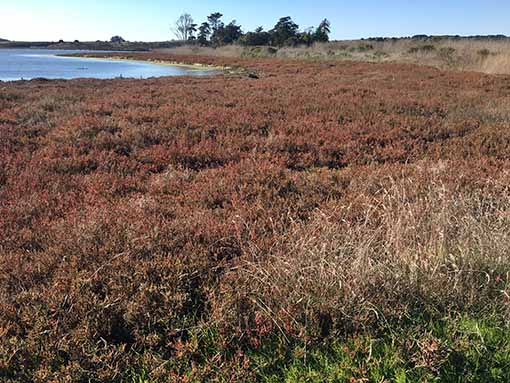Something to keep in mind…
The truth can be calming,
…
as it sets our feet on solid ground,
…
dispelling the obfuscating mist of lies,
…
deceptions and fossil-fueled propaganda
…
that colors the dominant culture.
…
Dahr Jamal
..
.

~
UN YOUTH CLIMATE SUMMIT
~
Youth leaders at United Nations demand bold action on climate change
[VIDEO]
Eva Jones selected to attend UN Youth Climate Summit
Hood River News 9-18-19
Hood River Valley High School senior Eva Jones has been accepted to attend the first ever United Nations Youth Climate Summit in New York City on Sept. 21. … Jones was one of 500 young people from around the world selected to attend the summit after demonstrating their commitment to addressing the climate crisis and displaying leadership in advancing solutions. She was one of 100 “Green Ticket” recipients, meaning the UNF is sponsoring her trip to this event. The Youth Climate Summit will feature a full-day of programming that brings together young activists, innovators, entrepreneurs and change-makers who are committed to combating climate change at the pace and scale needed to meet the challenge. It will be action oriented, intergenerational, and inclusive, with equal representation of young leaders from all walks of life.
At UN, youth activists press for bold action on climate emergency, vow to hold leaders accountable at the ballot box
UN News 9-21-19
“We have been waiting for you!” Jayathma Wickramanayake, the UN Youth Envoy, said, welcoming the boisterous crowd of young climate leaders, who made it clear from the very start of the day-long event that global political leaders are now on notice: they must make radical changes to shift the world away from fossil fuels and towards clean energy, protect our oceans, and promote sustainable consumption. This first-ever UN Youth Climate Summit follows Friday’s global ‘climate strike’, which saw millions of young people from across the globe walk out of school and jam streets in major cities, from New York to New Delhi and Santiago to San Francisco, waving protest signs with slogans like: “Every disaster movie starts with a scientist being ignored”; and “I’m ditching school because you’re ditching the planet.”
‘An Obligation to Make Radical Change’: At Youth Climate Summit, Young Leaders Say Merely Listening to Science Is Not Enough
Common Dreams 9-22-19
“You have started this movement,” Guterres said. “I encourage you to keep your initiative, keep your mobilization, and more and more to hold my generation accountable.” The secretary-general added that his “generation has largely failed until now to preserve both justice in the world and to preserve the planet.” Some of the young advocates in attendance weren’t convinced that the U.N. is much more committed to solving the climate crisis than it was before Thunberg captured the world’s attention with the first climate strike—organized and attended solely by her in Sweden last year. “Dear world leaders, I ask you,” said one young activist. “What is the purpose of having this summit if two days from now you are letting fossil fuel corporations and CEOs of corporations take the stage along with member nations and allowing them to influence climate policy when they are the ones that created this crisis?” “You claim you want to listen to youth solutions but this feels more like a photo op,” she added.

HOT AIR NEWS ROUNDUP
Most of us have seen Greta’s amazing UN speech by now. She pointedly reminds us that our entire carbon budget will be gone in less than eight and a half years…
Climate activist Greta Thunberg rebukes world leaders
[VIDEO]
Greta Thunberg: ‘We are ignoring natural climate solutions’
The Guardian 9-19-19
The protection and restoration of living ecosystems such as forests, mangroves and seagrass meadows can repair the planet’s broken climate but are being overlooked, Greta Thunberg and George Monbiot have warned in a new short film. Natural climate solutions could remove huge amounts of carbon dioxide from the atmosphere as plants grow. But these methods receive only 2% of the funding spent on cutting emissions, say the climate activists.
The latest report from the IPCC highlights the dramatic toll that warming has taken on the world’s water…
The IPCC Special Report on the Ocean and Cryosphere in a Changing Climate: IPCC PRESS RELEASE
IPCC 9-25-19
More than 100 authors from 36 countries assessed the latest scientific literature related to the ocean and cryosphere in a changing climate for the report, referencing about 7,000 scientific publications. The IPCC Special Report is a key scientific input for world leaders gathering in forthcoming climate and environment negotiations,, such as the UN Framework Convention on Climate Change Conference (COP25) in Chile in December. “The world’s ocean and cryosphere have been taking the heat from climate change for decades, and consequences for nature and humanity are sweeping and severe. The rapid changes to the ocean and the frozen parts of our planet are forcing people from coastal cities to remote Arctic communities to fundamentally alter their ways of life.”
Oceans and ice are absorbing the brunt of climate change
National Geographic 9-25-19
Climate change is here, heating the oceans and crumbling the planet’s ice sheets, a new report from the UN’s Intergovernmental Panel on Climate Change (IPCC) lays out. On Wednesday, the IPCC released a major report on the state of the planet’s oceans and ice. The 900-page report, which compiles the findings from thousands of scientific studies, outlines the damage climate change has already done to the planet’s vast oceans and fragile ice sheets and forecasts the future for these crucial parts of the climate system. … The problems aren’t theoretical, the report stresses: Science shows that they are here, now. And the oceans, polar ice caps, and high mountain glaciers have already absorbed so much extra heat from human-caused global warming that the very systems human existence depends on are already at stake.
The Ocean Is Screwed If We Don’t Do Something Now, UN Report Says
VICE 9-25-19
Here are some of the report’s findings and predictions: Earth’s oceans are becoming more acidic and less oxygenated, and marine heatwaves have doubled since 1982, making the seas increasingly inhospitable to life; collapsing marine food webs threaten the food and livelihoods of billions of people; rising sea levels and intensifying superstorms threaten to destroy and displace communities around the world; ocean animals are already on the move, migrating toward the poles at an average rate of 32 miles per decade, seeking relief from warming waters. … One of the most devastating pressures on the ocean is the shrinking of the cryosphere, which is the biome undergoing the most rapid transformation due to climate change. The IPCC report found that ice melt from Greenland, Antarctica, and mountain glaciers are the dominant force behind global sea level rise. Even if humans manage to reduce greenhouse gases enough to stay within a 1.5°C global temperature increase, ocean levels will still rise by a foot or two by 2100, the report said. But if we don’t meet that target, sea levels could increase by three feet, or more, by the end of the century.
This is the report referenced in the above articles…
Special Report on the Ocean and Cryosphere in a Changing Climate
IPCC 9-25-19
The IPCC approved and accepted Special Report on the Ocean and Cryosphere in a Changing Climate at its 51st Session held on 20 – 23 September 2019. The approved Summary for Policymakers (SPM) was presented at a press conference on 25 September 2019.
Worse Than Anyone Expected’: Air Travel Emissions Vastly Outpace Predictions
NYT 9-19-19
Greenhouse gas emissions from commercial air travel are growing at a faster clip than predicted in previous, already dire, projections, according to new research — putting pressure on airline regulators to take stronger action as they prepare for a summit next week. The United Nations aviation body forecasts that airplane emissions of carbon dioxide, a major greenhouse gas, will reach just over 900 million metric tons in 2018, and then triple by 2050. But the new research, from the International Council on Clean Transportation, found that emissions from global air travel may be increasing more than 1.5 times as fast as the U.N. estimate. The researchers analyzed nearly 40 million flights around the world last year. … Over all, air travel accounts for about 2.5 percent of global carbon dioxide emissions — a far smaller share than emissions from passenger cars or power plants.
US bird numbers drop by nearly 3bn in 48 years
Climate News Network 9-22-19
America’s birds have taken wing. Ornithologists calculate that in the past 48 years, total US bird numbers, reckoned together with Canada’s, have fallen drastically. There are now 2.9 billion birds fewer haunting North America’s marshes, forests, prairies, deserts and snows than there were in 1970. That is, more than one in four has flown away, perhaps forever. Birds are one of the better observed species. Enthusiastic amateurs and trained professionals have been carefully keeping note of bird numbers and behaviour for a century or more. A flock of avian scientists reports in the journal Science that they looked at numbers for 529 species of bird in the continental US and Canada to find that while around 100 native species had shown a small increase, a total of 419 native migratory species had experienced dramatic losses. Shorebirds are experiencing consistent and steep population losses. Sparrows, warblers, blackbirds and finches are down in numbers. Swallows, swifts, nightjars and other insectivores are in decline, almost certainly because insect populations are also in trouble.
Documentary “Blowout” Follows Climate Cost of Oil Boom from Fracking to Exports
The Real News 9-20-9
Dozens of coal-fired power plants too have been converted into natural gas power plants and about 200 more are now under proposal across the country, according to a recent story by USA Today. A decade ago, a new technique called fracking inspired films such as Gasland and Promised Land due to the impacts it was having on rural community water resources in the United States, but today the horizontal drilling process has unleashed impacts which are truly global in nature. For most Americans, those impacts remain out of sight, rarely looked at from either a macro or micro point of view. A new movie aims to change that, however. That film, Blowout: Inside America’s Energy Gamble, is a cross-newsroom collaboration between the outlets,
The Climate Disaster Inside America’s Prisons
New Republic 9-18-19
“When we think about the increasingly genocidal climate crisis, it’s important to understand that prisoners and detainees are literally on the front lines,” says prison abolitionist and organizer Jay Ware. It’s the imprisoned who suffer the greatest blows of climate-related catastrophe, he notes, “whether this is families fleeing climate change in the Global South being detained and separated into immigrant detention facilities or other black, brown, and poor white prisoners from typically toxic neighborhoods ecologically who are held in toxic prisons.” Climate vulnerabilities continue to intensify as paralyzing natural disasters multiply and occur with greater frequency, all while the U.S. government does nothing to curb the breakdown of the climate. “Every single day is a climate, weather, and environmental related disaster for people in prison,”
Living in Two Worlds: Capitalism Pretends All Is Well While the World Is Burning
Thruthout 8-20-19
Global capitalism demands we pretend all is well, while climate and political realities already reveal the end game we are living in. The U.S. government, along with many others in the western world, has lurched into overt authoritarianism, while climate chaos accelerates at a breakneck pace. … The pain of existing in this evaporating world intensifies against the backdrop of the rise of authoritarianism across much of the western world, the daily increasing wealth disparity between the grotesquely rich and the poverty-stricken, worsening racism, sexism, mass shootings, misogyny, xenophobia, and a mounting pressure from the global refugee crisis. … The truth can be calming, as it sets our feet on solid ground, dispelling the obfuscating mist of lies, deceptions and fossil-fueled propaganda that colors the dominant culture.
A synopsis of the introductory UN speeches from various leaders…
The Latest: New Zealand says climate crisis has no borders
The News Tribune 9-24-19
New Zealand Prime Minister Jacinda Ardern says that the ability of terrorism and climate change to reach across borders proves the need for leaders to respond with global solutions. Ardern’s remarks Tuesday to the United Nations General Assembly gathering appeared to be an argument against the trend toward isolationism in many countries. Ardern recounted how her own country responded to a mass shooting at mosques this year by changing gun laws and showing solidarity. But she said that she could not alone guarantee to a little boy who approached her in the wake of the tragedy that he would be safe because in a “borderless and technologically connected world,” acts of hate are not “neatly confined behind boundaries.” Ardern noted that island nations in the Pacific on the front lines of climate change know that that challenge is “completely and utterly in other people’s hands.”
The Amazon burns. But another part of Brazil is being destroyed faster
CNN 9-22-19
But just miles away, another part of Brazil, home to 5% of the planet’s plants and animals, and a carbon store of its own, is being destroyed at a faster rate. … Like in the Amazon, Cerrado habitats are being cleared because of global demand for meat — to make way for cattle ranches, and later converted to grow soy which is used to feed livestock or exported to other parts of the world. Deforestation is not new, and it doesn’t just happen in Brazil. But as global demand for meat soars, and as China turns to Brazil for its supply of soybeans amid the trade war with the US, experts worry that Brazil’s agricultural boom will come at the cost of habitats like the Cerrado. … The destruction of the habitat is also bad news for climate change: the Cerrado, the WWF says, locks up a “deceptively large amount of carbon” in its deep root systems. “It is a forest in a different way — it is an upside-down forest, because a lot of the biomass is underground,” de Oliviera Rosa told CNN. In a recent report, Greenpeace suggested that the remaining original vegetation of the region contains a carbon store of equivalent to 13.7 gigatonnes of equivalent carbon dioxide.
The Number of Migrants Is Growing Faster Than the World Population, new UN figures show
Futurism 9-17-19
The growing number of international migrants has now reached 272 million, outpacing the growth rate of the world’s population, according to new data from the UN’s Department of Economic and Social Affairs (DESA). …With forced displacements continuing to increase, refugees and asylum seekers account for close to a quarter of global increases, which have risen by 13 million in number from 2010 to 2017. Although migration is global, most journeys are taking place within a limited set of countries, with the US, Germany, and Saudi Arabia making up the top three.
Everest Is Melting, Revealing Tons of Garbage and Human Bodies
VICE 9-16-19
Mingma’s team rescued and retrieved bodies of 52 people from Everest and its neighbor Makalu, the fifth highest mountain in the world. But they weren’t just battling hostile terrain. There was the ever-present threat of man-made climate change. Only the previous year, unseasonably warm weather had caused an avalanche at the Khumbu glacier en route to Everest, killing 16 people. “You can’t predict what could happen anymore,” says Mingma. “Sometimes, there’s too much snow [on the mountains], sometimes less.” What that means is that dead bodies, some who’ve been lost for years, have started emerging from the ice.
Mont Blanc glacier in danger of collapse, experts warn
The Guardian 9-25-19
Italian authorities have closed off roads and evacuated homes after experts warned that a portion of a Mont Blanc glacier is at risk of collapse. Stefano Miserocchi, the mayor of the town of Courmayeur, said “public safety is a priority” after experts from the Fondazione Montagna Sicura (Safe Mountains Foundation) in the Aosta Valley said up to 250,000 cubic metres of ice was in danger of sliding off the Planpincieux glacier on the Grandes Jorasses peak. “This phenomenon once again testifies that the mountain is in a phase of strong change due to climatic factors, therefore it is particularly vulnerable,” Miserocchi said in a statement.
LEGISLATION, ELECTIONS & POLICY
McConnell’s Record on Coal Has Become a Hot Topic in His Senate Campaign
Inside Climate News 9-24-19
Mitch McConnell staked his last Senate campaign, five years ago, in large part on his support for the coal industry and coal miners. But McConnell’s unwillingness to shore up the fund that supports miners with black lung disease or their pension fund, even after dozens of his constituents traveled 10 hours by bus this summer to his Washington office, has allowed a well-funded opponent to seize on what should be McConnell’s strength: coal. “Coal miners risked their lives to fuel our country and our growth into a world power,” Democrat Amy McGrath says in a recent attack ad. Borrowing a union battle cry that still echoes in the hills and hollows around here after more than 80 years, McGrath says: “The question for anyone in Congress is, which side are you on?”
US Lobby Groups Most Effective at Blocking Climate Action – Report
Desmog 9-23-19
US lobby groups representing the fossil fuel and automotive industries are world leaders when it comes to stalling government action on climate change, new research shows. Of the top 10 trade associations considered to be the most effective at opposing climate-friendly policies globally, seven are based in Washington DC, according to a report published this week by lobbying watchdog InfluenceMap. Many of the organisations, which include the American Petroleum Institute and the Alliance of Automobile Manufacturers, have had their wishes granted since President Trump’s election. As part of a broader deregulatory agenda, the Trump administration has scrapped regulations on methane emissions and automotive fuel efficiency standards. Analysis by the NYU School of Law’s State Energy and Environmental Impact Center suggests these regulatory rollbacks will add an estimated 200 million tonnes of extra greenhouse gas emissions annually by 2025.
Dozens of Countries Take Aim at Climate Super Pollutants
Inside Climate News 9-25-19
Environment ministers from dozens of countries agreed this week to speed up their efforts to reduce a class of greenhouse gases that, until now, has been largely overlooked in international climate agreements but could play a crucial role in limiting the worst effects of climate change. They’re called short-lived climate pollutants, because they linger in the atmosphere for only a short time, but they are highly potent, both in warming the planet and in their local impacts on public health. These super pollutants include methane, which escapes from oil and gas systems, agriculture and livestock; hydrofluorocarbons (HFCs), which are used in refrigeration and cooling; and black carbon, a major component of soot. A recent IPCC report determined that the world won’t succeed in limiting global warming to 1.5 degrees Celsius (2.7°F) above pre-industrial levels without reducing them.
‘We Are Winning This Fight’: NY Gov. Cuomo Announces Opposition to Fracked Gas Pipeline
Common Dreams 9-25-19
Environmental campaigners celebrated Wednesday what they framed as a victory for people power after New York Governor Andrew Cuomo publicly declared his opposition to a fracked gas pipeline project. “We have taken a position: We’re against the pipeline,” Cuomo told WNYC’s Brian Lehrer Show. “That’s our position.” At issue is the proposed Northeast Supply Enhancement (NESE), commonly referred to as the Williams Pipeline, which would add on to existing infrastructure to link the fossil fuel from Pennsylvania to New York, passing under New York Harbor.
THE FIRES
Amazon fires: Brazilian president Jair Bolsonaro to use UN speech to reject criticism over response to blaze ravaging rainforest
The Independent 9-22-19
In response, the Bolsonaro administration launched a public relations campaign asserting Brazil’s sovereignty over the Amazon and commitment to protecting and sustainably developing the rainforest. Now the president is taking that message to the UN.
Great graph…
The World’s Forests Are Burning—and the Damage Goes Far Beyond the Amazon
Fortine 9-25-19
From the Amazon to central Africa, forests are burning. In late August, for example, Brazil’s National Institute for Space Research said that the number of fires in the country—largely set by humans—had jumped 84% this year over the same period in 2018. The amount of Amazon forest cover lost in Brazil in that span spiked 39%. Last year, according to Global Forest Watch, the tropics overall lost some 8.9 million acres of primary rain forest—an area equal to the size of Belgium. But not just rain forests are aflame: Greenpeace estimates that massive blazes in Siberia this year have released more than 166 metric tons of CO2, nearly equal to the annual emissions of 36 million cars.
The Amazon is still on fire. Conservation groups blame illegal logging and criminal networks.
NBC 9-22-19
As the Amazon continues to burn in a record fire season, experts say the problem is rooted in illegal logging and criminal networks exploiting the forests for its natural resources and agricultural potential. “The government doesn’t have any governance over what is going on,” Ane Alencar, science director for the Amazon Environmental Research Institute (IPAM), told NBC News from Brazil on Thursday. Alencar co-authored a report released by IPAM last week that found deforestation — and not drought — is the primary driver behind the record fires this year. Human Rights Watch also released a report Tuesday pointing to “rainforest mafias” for causing the deforestation, fires and the deaths of the land’s defenders — predominantly indigenous peoples.
THE ARCTIC
With Greenland’s Extreme Melting, a New Risk Grows: Ice Slabs That Worsen Runoff
Inslide Climate News 9-20-19
Scientists have added a new item to the long list of Greenland Ice Sheet woes. Along with snow-darkening algae and increasing rainfall, giant slabs of ice have been thickening and spreading under the Greenland snow at an average rate of two football fields per minute since 2001, new research shows. The slabs prevent surface meltwater from trickling down and being absorbed by the snow. Instead, more water pours off the surface of the ice sheet and into the ocean. That’s speeding Greenland’s contribution to sea level rise, said University of Liege climate researcher Xavier Fettweis, a co-author of a study published Wednesday in the journal Nature. “It is very likely that the current climate models overestimate the meltwater retention capacity of the ice sheet and underestimate the projected sea level rise coming from Greenland … by a factor of two or three,” he said.
New climate report: Oceans rising faster, ice melting more
AP 9-26-19
The oceans and the icy parts of the world are in big trouble and that means we’re all in big trouble too,” said one of the report’s lead authors, Michael Oppenheimer, professor of geosciences and international affairs at Princeton University. “The changes are accelerating.” These changes will not just hurt the 71% of the world covered by the oceans or the 10% covered in ice and snow, but it will harm people, plants, animals, food, societies, infrastructure and the global economy, according to the special report by the Intergovernmental Panel on Climate Change. The oceans absorb more than 90% of the excess heat from carbon pollution in the air, as well as much of the carbon dioxide itself. The seas warm more slowly than the air but trap the heat longer with bigger side effects — and the report links these waters with Earth’s snow and ice, called the cryosphere, because their futures are interconnected.
Most Greenlanders feel effects of climate change
Climate News Network 9-26-19
Most Greenlanders, those who live in the High Arctic, need no persuading that the climate emergency is real enough: three-quarters of them say they’ve experienced it.
Amid a flurry of scientific reports and dispatches by journalists, the world should know by now about the speed of the ice melt going on in the Arctic and the grave consequences it’s likely to have for the rest of the planet. What is often less well-known is how people in this vast region feel about the dramatic way that climate change is altering their environment and way of life. … Despite high unemployment rates in Greenland, a majority of those surveyed said they wanted to protect the environment, even if it was at the expense of jobs and economic growth.
FOSSIL FUELS
Coal-burning generators could swallow vital water
Climate News Network 9-24-19
Economic development in Asia – hugely dependent on electricity from coal-burning generators – could be cramped by climate change. That is because global heating could begin to constrain the supplies of water needed to cool thermal power installations. So the generators that fuel global heating and the climate emergency by releasing huge quantities of greenhouse gases into the planetary atmosphere could create conditions in which nations could begin to experience power shortages made more likely by the extra carbon dioxide pouring from their new power station chimneys. Power plants in Asia already account for 37% of global electricity generation and 41% of carbon dioxide emissions because 64% of this energy is already generated from coal, according to a new study in the journal Energy and Environmental Science. And about 490 gigawatts of new coal-fired plant could be in operation by 2030 in China, south-east Asia, Mongolia and parts of India.
The US Is Exporting a Fracked Climate Catastrophe
Desmog 9-23-19
In June, the United States displaced Saudi Arabia as the top exporter of crude oil, a stunning development for a country that only started exporting crude in 2016. That month, the U.S. exported over 3 million barrels of crude oil per day. To put that in perspective, the U.S. consumed 20.5 million barrels per day in 2018. That means that each day, the U.S. was pumping out of its borders a volume of oil equivalent to about 15 percent of its 2018 daily consumption. This expansion can be directly linked to the production of oil via hydraulic fracturing (aka fracking) that has driven the U.S. oil production boom over the past decade. In addition to driving U.S. crude oil expansion, this much-lauded “fracking revolution” also was responsible for essentially the entire increase in global oil production last year, when the U.S. contributed 98 percent of that increase. Without the shale boom, the world would likely be facing much higher oil prices and the potential for stagnating or even declining production (aka peak oil), both of which would help to hasten the needed energy transition to mitigate climate change.
Millennials Really Do Ruin Everything, And Big Oil Is Next
Oil Price 9-22-19
Read some headlines (or some memes if that’s more your speed). There are hundreds of headlines and one-liners that tell of the serial killing nature of millennials. The death knell has tolled so far for straws, napkins, diamonds, home buying, cable television, stock trading, and even breakfast cereal—at least as we once knew it. Some of those on the dead-to-me list are there simply because they have been replaced with new technology that is simply more convenient, like the shift from cable TV to Netflix. Others wound up on the list because they were shunned by the generation that likes to take the high ground. And it is this high ground that has placed the oil industry in the millennial crosshairs. The image, quite simply, of the oil industry can be summed up with a single word: “dirty”. Oil companies wishing to woo the millennial workforce and investment dollars will have to work overtime to shed this moniker. And Big Oil is starting to head down this road, but it isn’t quite far enough. … Colleges are influencing the current generation of students, and it’s not pretty for the oil industry. There are mandatory sustainability classes for many degrees, and students often come away with just this one side of the energy puzzle. Engineering departments and business departments are not the oil industry’s friend, who pick and choose which businesses to invite in for special talks and Q&A sessions—and oil companies are like the scrawny kid in gym class that always got picked last.
WEATHER
Slow-Moving Atlantic Storms Like Imelda and Dorian are Growing More Common
Category Six 9-24-19
Recovery efforts are underway in southeast Texas after the devastating rains unleashed last week by Tropical Storm Imelda, the fifth-wettest tropical cyclone in continental U.S. history. Imelda made landfall as a minimal tropical storm with 40 mph winds southwest of Galveston, Texas, on September 17, less than two hours after getting named. At landfall, Imelda was traveling northward at just 5 mph, and it maintained a generally northward motion at between 3 and 7 mph for the next 48 hours, gradually weakening. This excruciatingly slow pace allowed Imelda to dump rains of up to 43.39” over southeast Texas, causing catastrophic flooding that killed five. Imelda’s price tag will undoubtedly be in the billions. This year’s strongest storm, Hurricane Dorian, also moved agonizingly slowly at landfall when it pounded The Bahamas. … Texas experienced its second-hottest August on record last month, and this near-record heat heated up the waters of the western Gulf of Mexico, helping fuel Tropical Storm Imelda’s rains. Water temperatures in the western Gulf of Mexico on September 16, prior to Imelda’s formation, were near 30°C (86°F)—about 1°C (1.8°F) warmer than average. For each degree Celsius of ocean warming, about 7% more water vapor can evaporate into the air, and hurricanes can act to concentrate this moisture to generate much heavier rains than a simple linear 7% increase in rainfall per degree C of ocean warming. Human-caused global warming made near-record hot temperatures like Texas and the western Gulf of Mexico experienced in August more likely to occur.
Daily rainfall over Sumatra linked to larger atmospheric phenomenon
Science Daily 9-20-19
Atmospheric scientists reveal details of the connection between a larger atmospheric phenomenon, termed the Madden-Julian Oscillation (MJO), and the daily patterns of rainfall in the Maritime Continent.
Five-year period ending 2019 set to be hottest on record
PHYS ORG 9-22-19
Average global temperature between 2015-2019 is on track to be the hottest of any five-year period on record, according to the report compiled by the World Meteorological Organization. The period “is currently estimated to be 1.1 degrees Celsius above pre-industrial (1850-1900) times and 0.2 degrees Celsius warmer than 2011-2015,” it said. The past four years were already the hottest since record-keeping began in 1850. … But even if all countries meet the goals they set themselves, the world will warm by 2.9 degrees Celsius to 3.4 degrees Celsius, the report found. The current levels of ambition would need to be tripled to meet the two degrees Celsius goal and increased five-fold to meet the 1.5 degrees Celsius goal—technically still possible.
HEALTH
“Climate Anxiety” Starts in Elementary School. Friday’s Strike Channeled It.
Truthout 9-10-19
One thing Faithful says he thinks educators can work on, is satisfying what he describes as students’ urgent hunger to learn about the climate crisis. … Back in San Francisco, Jong and her middle schoolers marched toward the front of the thousands that filled the streets. A percussion group called Boom Shake accompanied the students, and chaperones flew banners high above the crowd. It would have been difficult to lose sight of the Urban Promise group — just as Jong had intended. Much like students across the country, Jong’s students report climate anxiety, which she says starts, on average, in fourth grade. September 20 was an antidote to that. Students made stencils and silk-screened their own shirts. They helped to plan the chants and draft demands. The students were able to channel their climate anxiety toward an energized purpose.

ADAPTION AND RESILIENCE
Residents of remote Tuktoyaktuk — which may become the first community in Canada to relocate due to coastal erosion and sea level rise — are taking climate data gathering into their own hands…
‘Beyond what our instruments can tell us’: merging Indigenous knowledge and Western science at the edge of the world
The Narwhal 9-20-19
Anikina and Lugt are a part of the local climate change monitoring team working under the umbrella of the Tuktoyaktuk Community Climate Resilience Project, launched in 2018 by Tuktoyaktuk Community Corporation. The project, currently funded by Crown-Indigenous Relations and Northern Affairs Canada, is an inter-agency effort to establish a community-based monitoring program that would allow for long term, continuous measurements of climate change indicators. That’s where the berries come in. The warming climate is moving ecological borders, changing and endangering unique plant life in the tundra. The monitoring program is a method of monitoring the easily overlooked ways the world is being altered by a new climate reality. But it’s also designed to act as a knowledge-sharing platform in which Western science-based research and traditional knowledge can compliment each other.
The new political story that could change everything | George Monbiot
[VIDEO]
Comprehensive and interesting report on world-energy-consumption projections…
EIA projects nearly 50% increase in world energy usage by 2050, led by growth in Asia
Green Car Congress 9-25-19
Manufacturing centers are shifting toward Africa and South Asia, especially India, resulting in energy consumption growth in those regions. According to EIA’s IEO2019 projection, the industrial sector, which includes mining, manufacturing, agriculture, and construction, accounts for more than 50% of global end-use energy consumption between 2018 and 2050. Economic activity for energy-intensive manufacturing, which includes production of iron and steel, food, paper, refined oil products, non-metallic minerals, aluminum, and basic chemicals, is increasingly concentrated in fast-growing economies of Asia. EIA projects India and China will account for more than half of global output from energy-intensive manufacturing between 2018 and 2050 in the Reference case.
How we can turn the cold of outer space into a renewable resource
TED
[VIDEO]
How were ancient peoples able to make ice in desert climates? This is a picture of an ice house, also called a Yakhchal, located in the southwest of Iran. There are ruins of dozens of such structures throughout Iran, with evidence of similar such buildings throughout the rest of the Middle East and all the way to China. The people who operated this ice house many centuries ago, would pour water in the pool you see on the left in the early evening hours, as the sun set. And then something amazing happened. Even though the air temperature might be above freezing, say five degrees Celsius or 41 degrees Fahrenheit, the water would freeze. The ice generated would then be collected in the early morning hours and stored for use in the building you see on the right, all the way through the summer months.
This could be revolutionary…
Blue Planet
Blue Planet 2019
Unique, Efficient & Low-cost Carbon Capture Method
Blue Planet’s technology uses CO2 as a raw material for making carbonate rocks. The carbonate rocks produced are used in place of natural limestone rock mined from quarries, which is the principal component of concrete. CO2 from flue gas is converted to carbonate (or CO3=) by contacting CO2 containing gas with a water-based capture solutions. This differentiates Blue Planet from most CO2 capture methods because the captured CO2 does not require a purification step, which is an energy and capital intensive process. As a result Blue Planet’s capture method is extremely efficient, and results in a lower cost than traditional methods of CO2 capture. … Blue Planet carbon sequestration plants produce coarse and fine aggregate made from sequestered CO2 utilizing the carbon mineralization process. The use of Blue Planet aggregate is the most effective way to achieve carbon neutral – or even carbon negative – concrete.

WILDLIFE & THE ENVIRONMENT
US and Canada have lost more than 1 in 4 birds in the past 50 years
Science Daily 9-19-19
A study published today in the journal Science reveals that since 1970, bird populations in the United States and Canada have declined by 29 percent, or almost 3 billion birds, signaling a widespread ecological crisis. The results show tremendous losses across diverse groups of birds and habitats — from iconic songsters such as meadowlarks to long-distance migrants such as swallows and backyard birds including sparrows. “Multiple, independent lines of evidence show a massive reduction in the abundance of birds,”
Hawaii’s climate catastrophe: The bleaching of coral reefs
Mercury News 9-24-19
Yet even this remote shoreline far from the impacts of chemical sunscreen, trampling feet and industrial wastewater is showing early signs of what’s expected to be a catastrophic season for coral in Hawaii. Just four years after a major marine heat wave killed nearly half of this coastline’s coral, federal researchers are predicting another round of hot water will cause some of the worst coral bleaching the region has ever experienced. “In 2015, we hit temperatures that we’ve never recorded ever in Hawaii,” … Forecasters expect high temperatures in the north Pacific will continue to pump heat into Hawaii’s waters well into October. “Temperatures have been warm for quite a long time,” Gove said. “It’s not just how hot it is — it’s how long those ocean temperatures stay warm.” Coral reefs are vital around the world as they not only provide a habitat for fish — the base of the marine food chain — but food and medicine for humans. They also create an essential shoreline barrier that breaks apart large ocean swells and protects densely populated shorelines from storm surges during hurricanes.
Excellent article…
Africa’s charcoal trade is decimating fragile forest cover
Miami Herald 9-24-19
Amazon rainforest have underscored the challenges of conserving the Earth’s remaining forest cover but the world’s poorest continent, home to over 1.2 billion people, has long struggled to protect its forests amid demand for plant-based energy sources seen by many as cheap, such as charcoal or firewood. The machete-wielding men lodge themselves deep inside forests for weeks at a time, felling trees that will be incinerated into pieces of charcoal. Because they often work at night and target seemingly idle public land, they operate with relative impunity while decimating forests in parts of Africa. … Reliance on charcoal or firewood is highest in Africa and Asia. … The value of the charcoal export trade from the Horn of Africa nation to the Middle East and elsewhere — though banned — is estimated at over $360 million per year. Some 8.2 million trees were felled for charcoal between 2011 and 2017.

PROTESTS • EXTINCTION REBELLION • RESISTANCE
Youth climate strikes sweep Asia ahead of UN Climate Action Summit
Mongabay 9-21-19
When Super-Hurricane Haiyan descended on the Philippines in 2013, it not only left behind more than 7,400 casualties and nearly $5 billion in destruction. It also helped birth a strong youth climate justice movement. That movement is now surging across Southeast Asia, with major climate strikes by students in the Philippines, Malaysia, Indonesia, Myanmar, Thailand and Cambodia on September 20. Such acts of defiance are not easy in Asia, where deference and obedience to parents and elders is deeply ingrained. But with the whole world at risk, Asia’s young people are in the streets and determined to save the future for their nations and themselves.
Climate Strikers Demand Climate Justice On ‘Historic’ Day Of Protest
Desmog 9-20-19
Some 300,000-400,000 people turned up in Australia to protest, with strikers posting images of packed streets in Melbourne, Sydney, Perth, and others. David Ritter, head of Greenpeace Australia-Pacific, hailed the “historic turnout”: It was, he said, “the largest climate rally in Australian history”. According to Greenpeace Poland, thousands of young people from 68 Polish towns turned out to strike today. In Warsaw, 10,000 young people marched through the streets and ended with a dance party in front of the Palace of Culture. In Russia, the atmosphere was more muted. Protesters in Moscow could not get approval for a rally, so instead had to queue up for individual pickets, which did not require permission. Other cities apparently did give permission, according to Greenpeace Russia. Still, the restrictive atmosphere didn’t stop the Moscow employees of the NGO, who posed with a #climatemergency banner. “It remains to get agreement 🙂 ,” they tweeted cheerfully.
Fridays for Future
Quebec’s largest school board makes Sept. 27 a PED day for climate march
Montreal Gazette 9-27-19
Quebec’s largest school board has taken the unprecedented step of giving all of its 114,000 students the day off on Sept. 27, to encourage them to participate in an international day of protest demanding government action on climate change.
New York City Climate Strike in Photos
Desmog 9-20-19
Many of New York City’s student strikers expressed fear about their future when I asked them about their motivation for joining the strike. “Climate change is scary. I want a future without being afraid of the air and water being polluted,” Aminah El-Amin told me. She is an 11th grader at the Institute for Collaborative Education.
Greta Thunberg
Greta Thunberg is leading kids and adults from 150 countries in a massive Friday climate strike
Vox 9-20-19
The Global Climate Strike comes just before countries will gather at the United Nations for the Climate Action Summit on September 23, where countries are supposed to ramp up their ambitions to curb greenhouse gases under the 2015 Paris climate agreement. A second worldwide strike is planned for September 27. … But this is truly a global strike and it will be the movement’s largest yet, with 2,500 events scheduled in over 150 countries. (The Global Climate Strike website has a searchable map showing all the events.) Activists will also use the strike to pressure governments on local issues. …Lately, more and more young activists have been radically reshaping the conversation around climate change.
Greta Thunberg Puts ‘Haters’ In Their Place With Stunning Twitter Thread
Yahoo 9-25-19
Thunberg blistered her opponents in a Twitter thread in which she asked why her opponents are coming after her with personal attacks instead of addressing the science she is citing.
Greta on twitter…
”I honestly don’t understand why adults would choose to spend their time mocking and threatening teenagers and children for promoting science, when they could do something good instead. I guess they must simply feel so threatened by us.”
Extinction Rebellion
JOIN XR USA: on their website
XR NEWSLETTERS & EVENTS: on their website
XR USA: on YOUTUBE
Extinction Rebellion publish plan to bring London to a standstill for two weeks in October complete with code names for the 12 government sites they plan to target
Daily Mail 9-24-19
Climate change activists to occupy parts of central London from October 7 to 14. Areas expected to be occupied are Trafalgar Square, Home Office and The Mall. Will form part of an ‘International Rebellion’ involving 60 cities across the world. The Metropolitan Police today said it was aware of planned protests next month.
Extinction Rebellion protesters to blockade Dover port this weekend
Independent 9-19-19
Dover is one of the busiest ports in Europe and sees five million vehicles and around 12 million passengers pass through it every year. Chris Atkins from Extinction Rebellion Dover said: “As climate change develops, millions of ordinary Britons will face the real and growing threat of food shortages, hunger and starvation. “Extreme storms and floods are already causing major crop failures across the world, with high temperatures also hitting livestock agriculture. “This crisis may seem far away now but given the dependency of the UK on food imports, we are extremely vulnerable.

CLIMATE STUDIES
These researchers answer questions about their discoveries and the implications of Trump’s rollback of regulations…
Controlling methane is a fast and critical way to slow global warming, say experts
EurekAlert 9-20-19
In independent studies, two Princeton University research teams recently identified surprisingly large sources of methane, a powerful greenhouse gas, being leaked into the atmosphere. Pound for pound, methane causes a far greater warming effect in the atmosphere than does carbon dioxide — 86-fold more heating over 20 years, and 35-fold more over the course of a century. … Just after these studies were released, the Trump administration announced plans to roll back restrictions on methane emissions.
Earth warming more quickly than thought, new climate models show
PHYS ORG 9-17-19
With only one degree Celsius of warming so far, the world is coping with increasingly deadly heat waves, droughts, floods and tropical cyclones made more destructive by rising seas. A new generation of 30-odd climate models known collectively as CMIP6—including the two unveiled Tuesday—will underpin the IPCC’s next major report in 2021. “CMIP6 clearly includes the latest modelling improvements,” even as important uncertainties remain, Joeri Rogelj, an associate professor at Imperial College London and an IPCC lead author, told AFP.
Cutting emissions gradually will avert sudden jump in warming
Science Daily 9-18-19
Steadily reducing fossil fuel emissions over coming years will prevent millions of premature deaths and help avoid the worst of climate change without causing a large spike in short-term warming that some studies predict, new analysis from finds. The finding dispels the misconception that the air-quality and climate benefits of transitioning to clean energy play out at different timescales — a sticking point in recent climate negotiations.
Ocean-based actions can close gaps in climate change mitigation
PHYS ORG 9-25-19
This week’s other key report, the one organized by the High Level Panel for a Sustainable Ocean Economy, analyzes five categories of ocean-based activities to evaluate their potential to reduce, sequester and store emissions. The categories are ocean-based renewable energy; ocean-based transport; protecting and restoring marine ecosystems (especially “blue carbon” ecosystems like mangroves, salt marshes and seagrass beds); shifting diets to include more protein from seafood and less land-animal protein; and storing carbon in the seabed. “The report concludes that the first four of those can be deployed right away, but seabed carbon storage will require additional research,” said Lubchenco, who co-chaired the expert group that advises the panel and oversaw the report. “Combined, there is the potential for ocean-based activities to provide as much as 21% of the emission reductions needed to achieve the 1.5-degree target by 2050. That means in addition to the options for reducing emissions that we already knew about, we now have some new and powerful tools to deploy.”
Global Warnings
Paul Beckwith: “I declare a global climate change emergency to claw back up the rock face to attempt to regain system stability, or face an untenable calamity of biblical proportions.”
Kevin Hester: “There is no past analogue for the rapidity of what we are baring witness to. There has been a flood of articles … 2C is no longer attainable and that we are heading for dangerous climate change”
Magi Amma: We need to turn on a dime at mach nine!
…
Equivalencies:
• 1 gigatonne equals one billion tons
• 1 gigatonne of carbon equals 3.67 gigatonnes of CO2
• 1 part per million of atmospheric CO2 is equivalent to 7.81 gigatonnes of CO2





